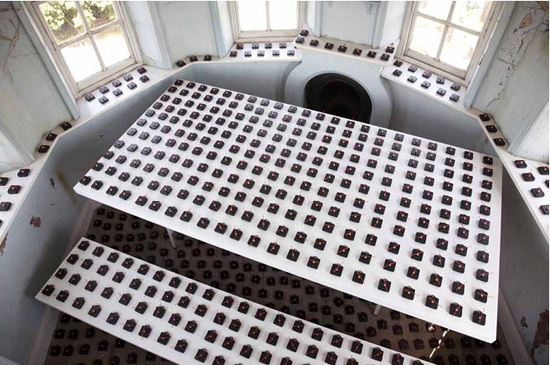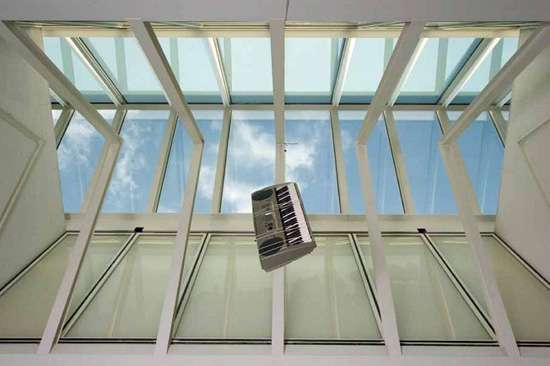|
Introduction of the artist:

Yukio FUJIMOTO (Japan)
Born in 1950, Nagoya, Japan. Lives and works in Osaka. Selected solo
exhibitions: 2011 n/t, SHUGOARTS , Tokyo / 2009 Shadow, Hyogo Prefectual Art
Museum, Hyogo, Japan / 2009 The Tower of Time, Perrot's Folly, Ikon Gallery
Off-site, Birmingham, UK / 2007 plus/minus, The National Museum of Art, Osaka /
1997 - 2006 Audio Picnic at the Museum, Otani Memorial Art Museum, Nishinomiya
City, Hyogo, Japan / Selected group exhibitions: 2012 Notations: The Cage Effect
Today, Hunter College - Time Square Gallery, New York / 2010 Negotiations, Today
Art Museum, Beijing / 2007 52nd Venice Biennale / 2001 Facts of Life:
Contemporary Japanese Art, Hayward Gallery, London / 2001 The 49th Venice
Biennale.
Introduction of works:

十 一 , installation, 2007, photo by Bose Corporation.

The Tower of Time, installation, 2009.

Room, installation, electronic keyboards, 2001.
The work of Japanese artist Yukio Fujimoto is concerned primarily with the
nature of our perception of the world, especially through sound. He is
interested as much in how we hear as in what we hear. Human ears are attuned to
a narrow band of electro-magnetic wavelengths, sensitive to sounds at a limited
range, and, roughly speaking, in stereo, and this is key to his aesthetic
proposition. In other words, for Fujimoto a work of art is an equation between
an artistic gesture – an art object, an event etc. - and our experience of
it.
In a recent statement, he explains, that “an aural experience consists not
merely of listening to sounds, but also of perceiving momentarily a world hidden
below the everyday, which cannot be captured by the eyes alone. When you make
work using sound you are, as a matter of course, tempted into the realm of the
philosophical.”
For this exhibition, Fujimoto installs various music keyboards, with inbuilt
sound systems, on the walls of the staircase of the Guangdong Museum. Each has
keys strapped down so that they play different chords. The sound overall is
evocative and droning, and always changing as we walk on and around the
staircase. Different chords occur up front according which keyboard we’re
closest to, whilst others, through our movement, drift into an aural hinterland.
What we hear absolutely depends on who, what and where we are.
| 
